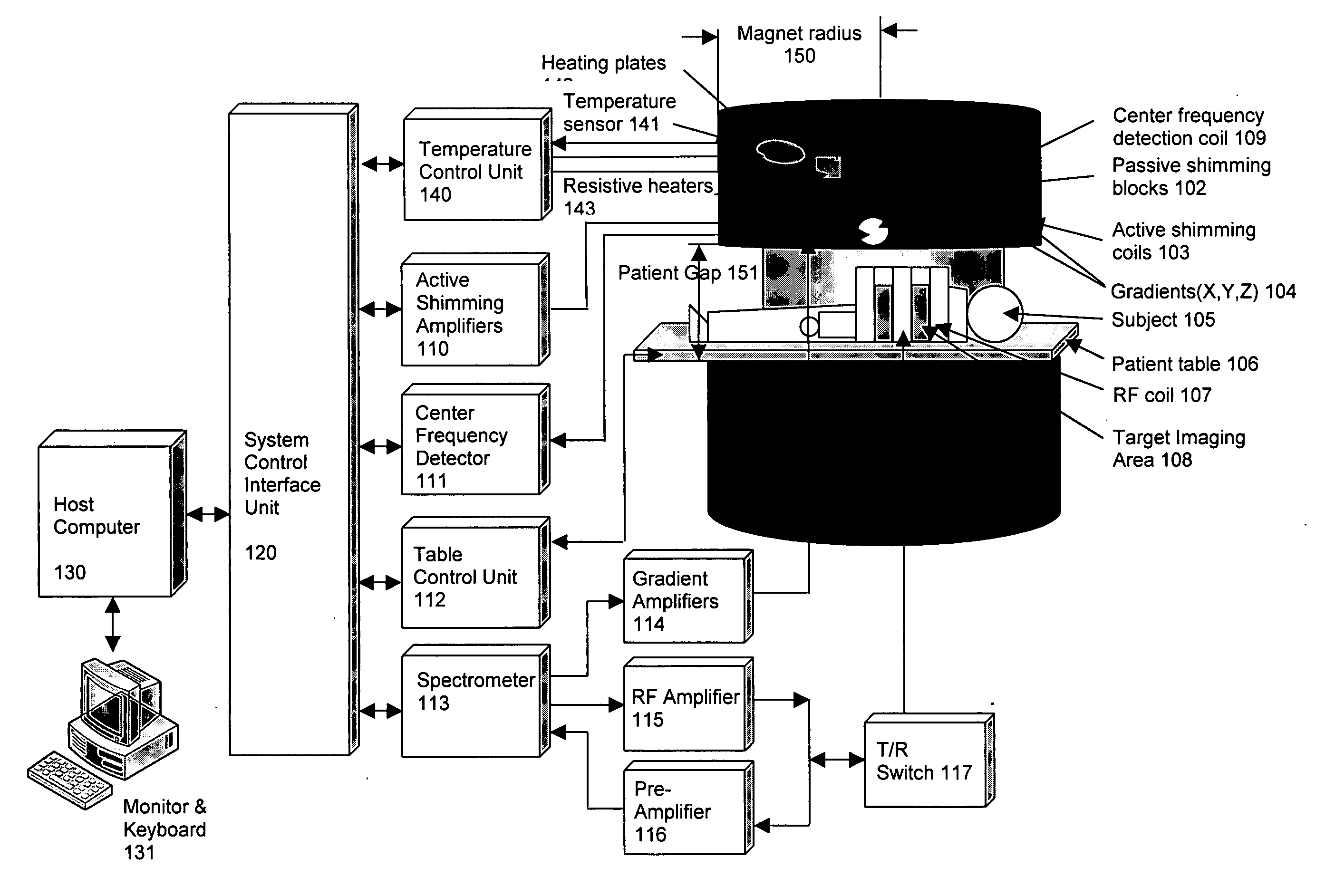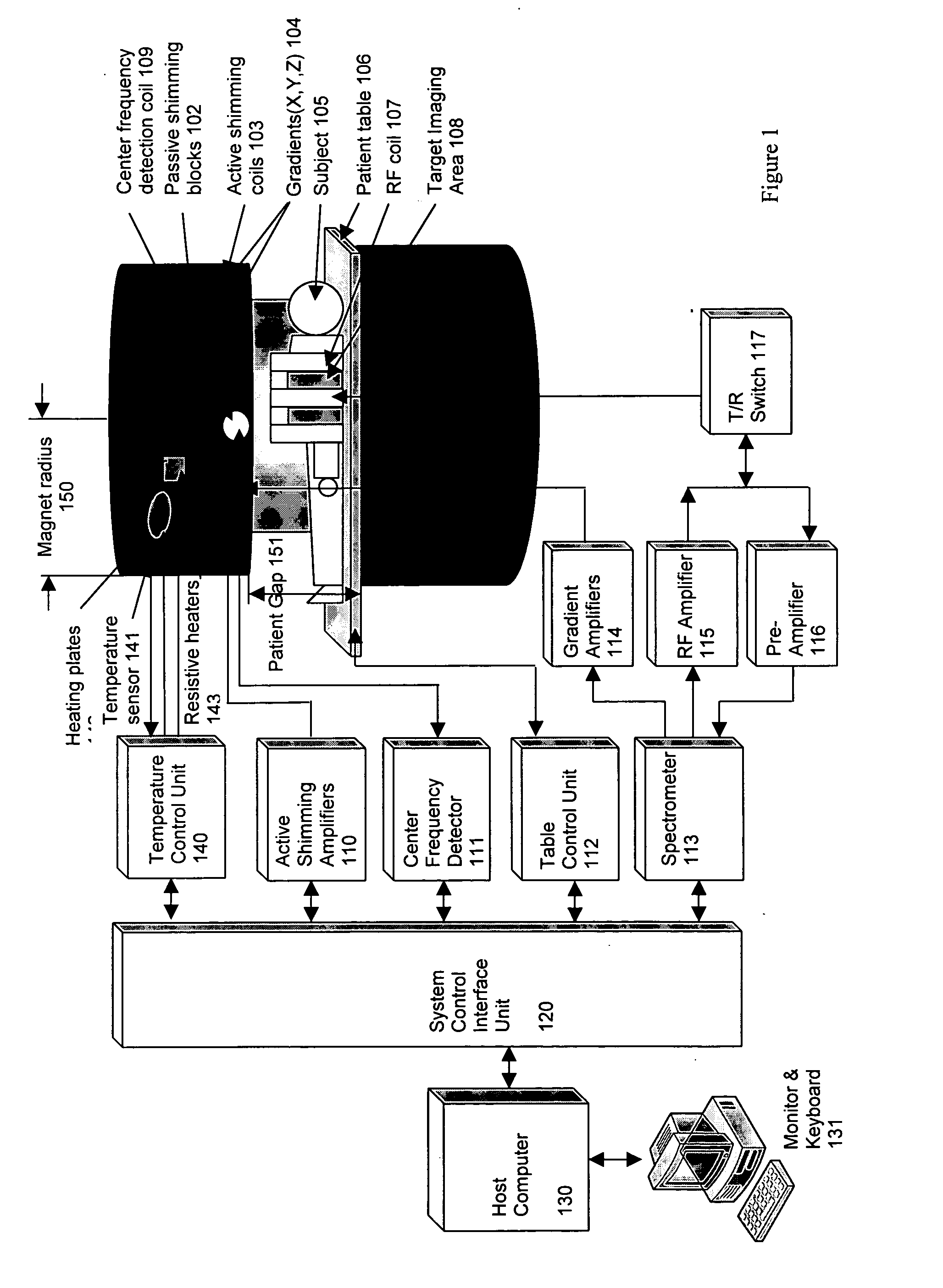Method of using a small MRI scanner
a technology of mri scanner and mri scanner, which is applied in the field of small mri scanner, can solve the problems of reducing the optimal imaging area, reducing the field stability, and significant cutting of magnet material cost, so as to reduce the radius of the magnet, effectively keeping the same patient, and facilitating patient access
- Summary
- Abstract
- Description
- Claims
- Application Information
AI Technical Summary
Benefits of technology
Problems solved by technology
Method used
Image
Examples
Embodiment Construction
[0030]FIG. 1 illustrates a simplified block diagram of a MRI system for producing images in accordance with embodiments of the present invention. The system could have an open, cylindrical shaped electrical, superconducting, or a permanent magnet. An open, cylindrical permanent magnet is shown as an example in FIG. 1.
[0031] In the embodiment of this invention, the static magnet field is provided by the magnet 101 as shown in FIG. 1. In the preferred embodiment of this invention and as shown in FIG. 1 the field is oriented vertically; however, this invention applies to any other types of magnets and field orientation as well. Passive shimming blocks 102, mounted on the inner surfaces of the magnet, are used for improving the homogeneity of the magnetic field. These passive shimming blocks 102 are usually ferrite or high permeability materials. To further improve field homogeneity, active shimming coils 103 are also mounted within the gradient coils 104. The shimming coils generate, ...
PUM
 Login to View More
Login to View More Abstract
Description
Claims
Application Information
 Login to View More
Login to View More - R&D
- Intellectual Property
- Life Sciences
- Materials
- Tech Scout
- Unparalleled Data Quality
- Higher Quality Content
- 60% Fewer Hallucinations
Browse by: Latest US Patents, China's latest patents, Technical Efficacy Thesaurus, Application Domain, Technology Topic, Popular Technical Reports.
© 2025 PatSnap. All rights reserved.Legal|Privacy policy|Modern Slavery Act Transparency Statement|Sitemap|About US| Contact US: help@patsnap.com



